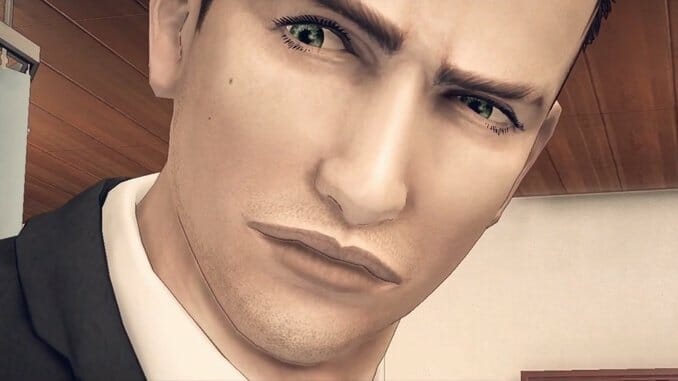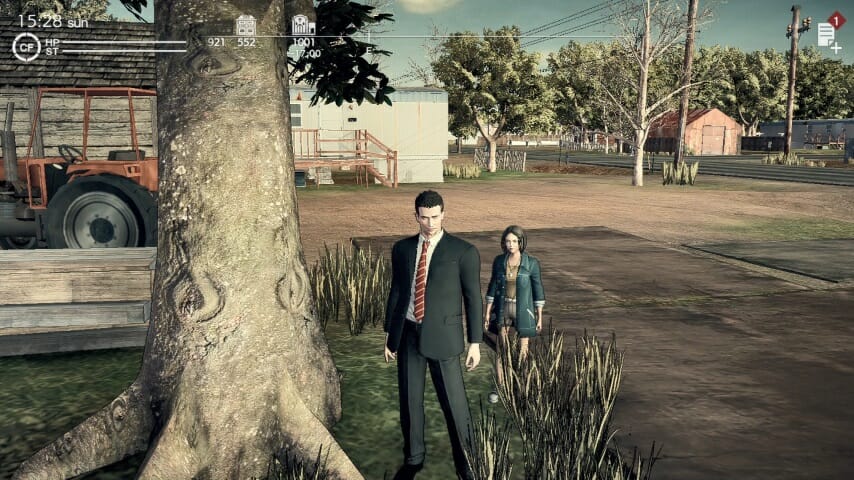
In retrospect, the popularity of 2010’s Deadly Premonition is unsurprising in a medium that prizes nostalgia. True, at the time of its debut, its dated graphics and design values placed it a full generation behind the console it was released on, the Xbox 360. But its trappings, though aging, were buttressed by the strength of its inspiration, Twin Peaks. An unmistakable homage, Deadly Premonition combined Japanese horror roots with quirky, small-town charm to create a game as bizarre, imperfect and lovable as the show that inspired it.
The sequel announcement, made during PAX Prime in 2018, came as a surprise. By that point the game’s director, Hidetaka “Swery” Suehiro, had already moved on to other projects, and with at least one canceled game in his wake, a return to Deadly Premonition seemed unlikely. In the decade since it first came out, though, horror games have had a renaissance, with current day design tools meeting vintage aesthetics to redefine expectations of sophistication and visual quality across the genre. The sequel comes out at a time where its lack of polish is more welcome than ever. Whereas once the game’s production values competed with its characters for camp, both aspects can now be judged on their individual merit. The question is, with a key part of its “so bad it’s good” appeal now completely obsolete, can Deadly Premonition stand on its own feet?
Deadly Premonition 2: A Blessing in Disguise takes place in Le Carre, Louisiana, serving as both an epilogue and origin story for the Red Seed murders of the first game. After a chance vacation to New Orleans, Agent Francis York Morgan hears of the disappearance of Lise Clarkson and, suspecting the case’s connection to the increasing threat of the drug Saint Rouge, travels to the town to investigate. From there, the story plays out as a campy, rural melodrama centered on common themes of legacy, birthright and small-town corruption. York bonds with a new sassy assistant, 8-year-old Patricia Woods, and begins to unfurl the various entanglements of Le Carre. He soon hears of a Professor R and discovers a disturbing plan to enact a secret ritual that promises to destroy the Clarkson family. Throughout it all, York befriends a variety of unusual characters, each delivered with a B-movie flair that straddles a foot in each world, vacillating between cheeky self awareness and passionate mimicry.
If there’s anything that Swery seems to have picked up from his apparent fondness for David Lynch, it’s a penchant for the distinctive. Like Twin Peaks, Le Carre (and Greenvale before it) is populated by a wide cast of eccentric people whose quirks and side stories are framed with as much importance as the town’s central mystery. As Agent Morgan looks into the murder of Lise Clarkson, he meets all kinds: a folksy diner owner, a territorial bowling grandma, a hotel owner with multiple personalities. There’s even a Voodoo priest from beyond that only York can see. While the Clarkson family, their involvement with Saint Rouge, and what it means for the Red World is compelling, it plays second fiddle to how York interacts with and perceives the town and its denizens, especially Patti (whose sass towards York makes for the most delightful dialogue of the game). It’s as much about these unique individuals as it is about who killed Lise Clarkson.

But the problem with Swery’s imitation of Lynch is that it’s critical towards its characters rather than earnest. There is a very fine line between observation and voyeurism, and at times, Deadly Premonition doesn’t know the difference. While the writing is crafted with intentional camp, York’s comments on the people of Le Carre are so othering that you get the sense that they are very strange to him. It’s a distancing that, despite York’s own eccentricities, carries weight as both the protagonist and a federal agent, as it turns his self imposed role as the intellectually superior problem solver into a patronizing one. Part of what made Twin Peaks work is that for all of its “weirdness,” it didn’t pass judgment. Laura Palmer, for example, was a teenage prostitute and drug addict. She was also coping with a lot of trauma. Ultimately, her struggle for autonomy and sanity was framed as a battle for the possession of her soul, one that she won by losing her life. Whatever Lynch’s complicated views on vice and female suffering, the people in Swery’s world are rarely given that kind of thorough framing. Often, the characters are too absurd to be humanized.
Absurd, here, is a bit of a euphemism. Though Swery may defend his games as “reflections of the real world,” a lot of his writing wouldn’t withstand scrutiny if it were taken at face value. Many of his characters so closely tread the line between affable and alienating that at times it’s hard to know where he’s coming from. Perhaps the most troubling is how the game treats its antagonist Lena Dauman, an estranged member of the Clarkson family. While the game is generally accepting of her identity, she is frequently deadnamed and misgendered and the writers are also so eager to misdirect and shock the player that her transness is used as a deception. The extremities of the plot also undermine whatever empathy they afford her motivations and vilify her past the point of return. Though her story’s adjacent themes of familial rejection and destroyed bloodlines are relevant and would be intriguing to explore further, much of the story is told at Lena’s expense. It’s hard, then, to feel as though she’s anything more than a means to an end.
For all the game’s self-references to its own B-movie filter, at times the tropes are presented with such eagerness that it becomes difficult to take York’s observations in good faith. For parody to be effective, as the saying goes, its target must be clear and an element of criticism must be made. Aside from a few asides about the absurdity of videogames, there’s not a lot to suggest that the game does not engage these tropes with full sincerity. A charitable reading is that Swery is clumsily trying to express his fondness for idyllic small-town American life. A less forgiving eye would say Swery, like York, is so influenced by his obsession with cop shows and thriller films that from his outsider’s perspective he is unable to accurately or significantly comment on the nuances of rural America. Either way, the format can’t be redeeming if it’s not humanizing.
The framing of Agent Morgan’s own issues reveals how capable Swery is of sympathetic writing. Of all the characters in Deadly Premonition, Agent Morgan is among the more outwardly abnormal. And yet, he’s the most understood. While his constant asides to an unseen person sometimes confuse the people in Greenvale and Le Carre, for the most part, he is given a tolerant buffer zone that validates his dissociative identity as an understandable response to trauma. At times this defense mechanism is even posed as a strength, one that allows Agent Morgan to see the Red World and engage in supernatural profiling. This empowering perspective makes it all the more touching and redemptive when York trades places with Zach and moves on to the afterlife with Emily in the first game. And it is amplified in the Deadly Premonition 2 finale, when York emerges from the safety of Agent Morgan’s mind to protect Zach one last time. After they come together to defeat Kaysen, we see a future where both Zach and York continue to watch over Patricia, with Zach chatting from a webcam while York lingers in an instant messenger nearby. It’s a small gesture at a glance, but also a subtle acknowledgment that positions York not as an identity, but as someone who is very real, not just to Zach. There’s kindness in offering Agent York that concession. I wonder how the rest of the game would have landed if its most vulnerable characters had been given that same consideration.
Deadly Premonition 2: A Blessing in Disguise was developed by Toybox Inc., White Owls Inc., and Now Production, and published by Rising Star Games. It is available for the Switch.
Holly Green is the editor-at-large of Paste Games and a reporter and semiprofessional photographer. She is also the author of Fry Scores: An Unofficial Guide To Video Game Grub. You can find her work at Gamasutra, Polygon, Unwinnable, and other videogame news publications.